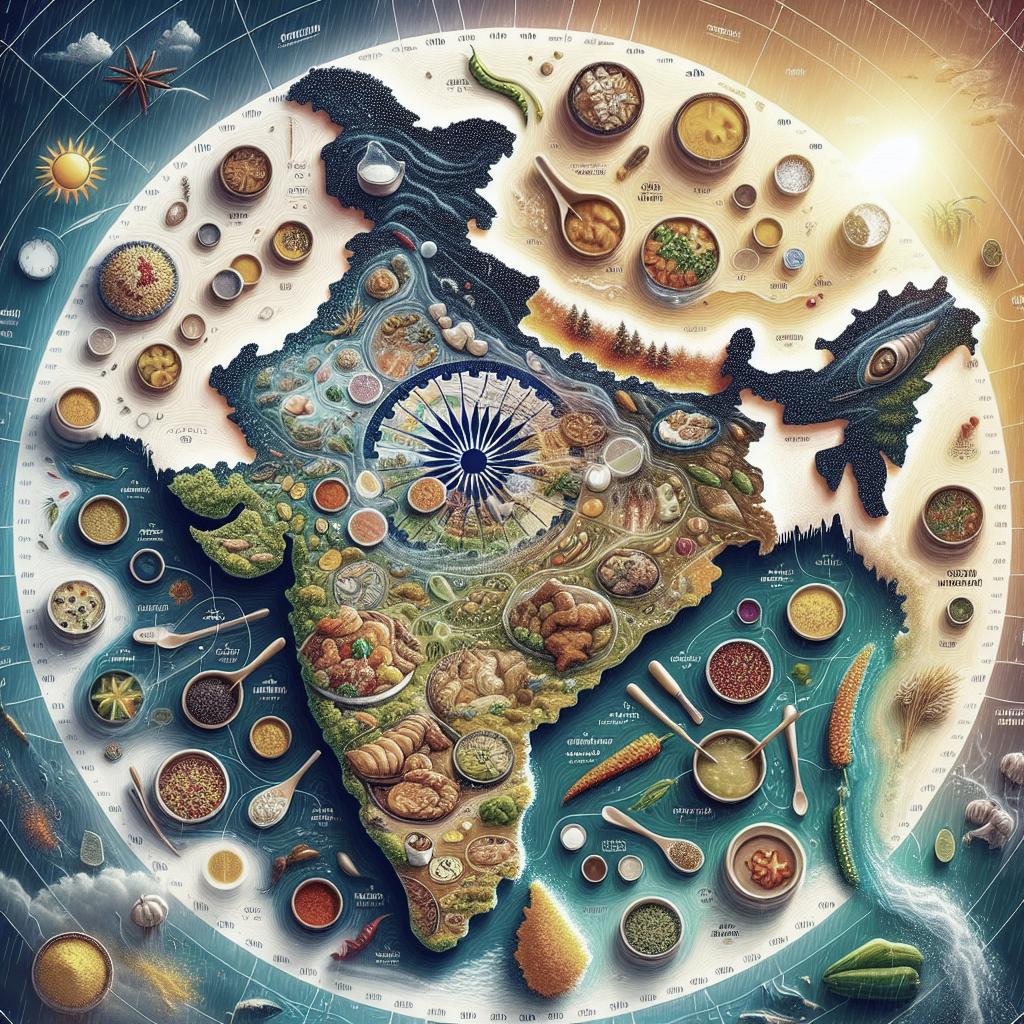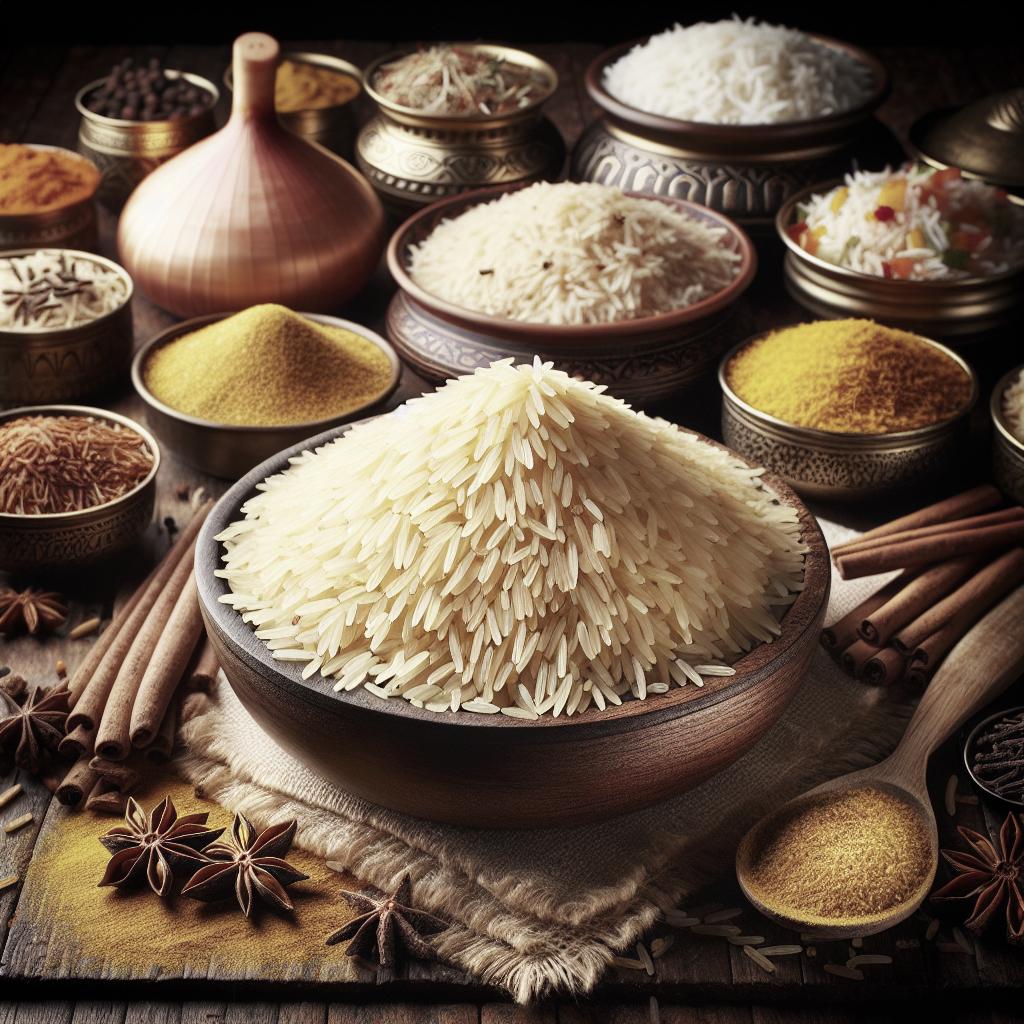“`html
The Influence of Climate on Indian Regional Cuisines
India’s rich tapestry of regional cuisines is not only a reflection of its diverse cultures but also a testament to the climates that shape them. From the rice-dominated dishes of the East to the wheat-laden meals of the North, climate has played a crucial role in determining the ingredients and cooking styles prevalent in each region. In this post, we’ll explore how India’s varied climates influence what ends up on the plate, focusing on several staple foods and beverages. You’ll discover the significance of environment in shaping culinary traditions, drawing connections between climate and the unforgettable flavors that characterize Indian cuisine.
Roti & Rice and Everything Nice
The dichotomy between roti and rice in India’s culinary landscape is a straightforward representation of the country’s geographic and climatic divide. In the arid and semi-arid regions like the North, wheat thrives as a staple crop, leading to a cuisine centered around various forms of flatbreads such as roti and naan. The cooler climates facilitate the growth of wheat and other hardy grains, hence the prevalence of hearty breads.
In contrast, the Southern and Eastern parts of India, characterized by warm and humid climates, are ideal for rice cultivation. The abundance of rainfall ensures that rice paddies are lush, allowing dishes like dosa, idli, and biryani to take center stage in these regions. The climatic conditions in these areas encourage the use of fermentation and steaming as cooking techniques, resulting in a distinct culinary style.
This fundamental division between wheat and rice isn’t just about preference; it’s rooted in accessibility and the practicality of ingredients driven by climate conditions. Thus, what begins as a simple choice between roti and rice reflects deeper environmental and geographical factors.
The Great Indian Masala: The Secret Ingredient
The term ‘masala’ in Indian cuisine conjures images of vibrant spices that are central to regional dishes, each deeply influenced by local climates. The Western Ghats, with their tropical climate, are ideal for growing spices like cardamom, pepper, and cloves, which find their way into the famous Malabari dishes of Kerala. The coastal humidity contributes to preserving these spices, enhancing their potent flavors.
In contrast, the dry climate of Rajasthan necessitates the use of spices that can withstand arid conditions. Spices like cumin, coriander, and fennel are staples in Rajasthani cooking, resulting in dishes that are both robust and aromatic. These spices not only flavor the food but also support digestion in hot climates, showcasing how regional spice usage is often functional.
Across the country, whether through fiery Andhra curries or subtle Bengali dishes, the climate’s role in influencing the availability and type of spices is undeniable. Masalas, therefore, are more than just a blend of spices—they are a culinary adaptation unique to India’s varied climates.
Aloo Paranthas: Breakfast Special
Aloo Paranthas hold a special place in North Indian breakfast traditions, offering warmth and sustenance against cold climates. Their rise in popularity in regions like Punjab and Haryana is not accidental; the cold winters encourage energy-dense meals that provide comfort and nourishment.
The ingredients used in preparing aloo paranthas, such as potatoes and wheat, are well-suited for cultivation in the fertile plains of the North, where the cooler climate supports their growth. The preparation, involving generous amounts of ghee or butter, adds an extra layer of indulgence. Such meals are typical in areas with colder climates, where the caloric demands of people are higher.
Beyond offering a hearty meal, aloo paranthas represent cultural hospitality, with recipes passed down through generations. The influence of climate on these dishes is reflected not only in ingredient availability but also in the cultural rituals that accompany their preparation and consumption.
Chai: The Perfect Companion
Chai, India’s beloved staple, is more than just a beverage; it is an experience shaped overwhelmingly by climate. The lush, sprawling tea gardens of Assam and Darjeeling, nurtured by high rainfall and misty climates, are famous for producing the nation’s finest teas. Here, the wet climate ensures the tea leaves possess a rich flavor profile that is cultivated season after season.
The preparation of chai varies across regions, demonstrating climate-made adaptations. In the cool climes of Kashmir, kahwa—a form of chai made with green tea leaves, almonds, and saffron—is preferred. The ingredients used and the warm spices such as cinnamon and cardamom add zest and warmth, perfect for the chilly afternoons.
The concept of chai extends beyond taste; it fosters connection and warmth, much needed in the cold or damp climates where it is most popular. Chai, therefore, serves as both a refreshment and a cultural linchpin, its prominence deeply rooted in regional climates.
Lessons Learned
| Category | Climate Influence |
|---|---|
| Roti & Rice | Climatic conditions dictate wheat or rice cultivation, influencing regional dietary staples. |
| Spices & Masalas | Climate shapes the type and usage of spices, impacting flavor profiles across regions. |
| Aloo Paranthas | Rich, caloric breakfasts developed to suit cold northern climates. |
| Chai | Region-specific adaptations influenced by local weather conditions. |
“`


